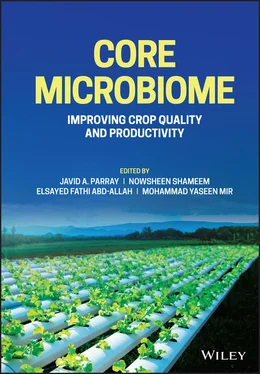Table 1.1 Some Endophytic fungi obtained from different parts of neem tree. [54]
| Genus (former name) of Endophytic fungi |
Parts of neem tree |
References |
| Trichoderma |
Root, seed, leaf, bark, flower |
[51,53] |
| Verticillium |
Root |
[51,53] |
| Humicola |
Flower |
[51,53] |
| Chloridium |
Root |
[51] |
| Nigrospora |
Root, seed, leaf, bark |
[50,51,53] |
| Scytalidium , Penicillium |
Root |
[51] |
| Aspergillus |
Root, seed, leaf, bark, flower |
[52] |
| Alternaria , Drechslera |
Flower |
[50,51] |
| Phoma |
Leaf |
[53] |
| Periconia |
Bark |
[50,53] |
| Stenella |
Bark |
[50] |
| Cercinella |
Root |
[51] |
1.4 Plant Growth-Promoting Rhizobacteria (PGPR): Biological Management of Plant Pathogens
In plant pathology, “biocontrol” is often considered weapon to manage plant diseases. It is the use of antimicrobial compounds produced by microbial antagonists. Microorganisms that control the causative agents of plant diseases are collectively known as “biological control agents” (BCA) [36] with microorganisms, chemical mediators, and natural substances [37]. Endophytes are the microbial antagonists, mainly fungal and bacterial, that play an essential role in controlling disease. Both of them act differently to effect biological control, from the struggle at the niche level (colonization) during the making of antimicrobial compounds to bringing on the host resistance response [38–42], thus aiding in enhancing plant development along with health.
The constricted zone of soil particularly inclined by the root system is the rhizosphere [43]. This zone is loaded with nutrients due to the abundance of plant secretions, like amino acids and sugars, compared with most of the earth, providing a good source of energy and nutrients for bacteria [44]. Various microorganisms colonize the rhizosphere, and therefore, the bacteria settling in this environment are called rhizobacteria [45]. Plant-linked bacteria are often categorized within three groups, i.e. beneficial, harmful, and neutral groups, based on their effects on plant growth [43]. Beneficial free-living soil bacteria are usually characterized as PGPR [46]. Bacteria of various genera are identified as PGPR, of which the most important groups are Bacillus and Pseudomonas spp. [47]. PGPR affects plant growth directly or indirectly. The direct promotion of plant growth by PGPR involves providing the plant with a compound synthesized by the bacterium, for example, plant hormones, or promoting the uptake of certain nutrients from the environment [48]. The indirect progress of plant growth happens when PGPR prevents or reduces the harmful effects of one or more phytopathogenic organisms. This can be done by inducing resistance to pathogens or producing antagonistic substances [49].
The rhizosphere of many plants is known to be a potential source for selecting good microorganisms that may affect plant health. PGPR offer an excellent substitute for environmental-friendly biological control of plant-pathogen and amelioration of the cropping systems into which they can be most beneficially applied. The role of medicinal plants and their endophytic microbiota in producing plant antimicrobial compounds is concerned with plant health and remedial applications. The production of antimicrobial bioactive compounds by endophytes is currently receiving urgent concern due to the emergence of multidrug-resistant pathogens. Indeed, the study of medicinal plants especially neem and their endophyte interaction is a flourishing prospect to develop sustainable methods to restrain human and plant pathogens. Therefore, more work on endophytes of medicinal plants for their antioxidant activities can impose a strong effect on the search for novel bioactive compounds.
1 1Chitme, H.R., Chandra, R., and Kaushik, S. (2003). Studies on antidiarrheal activity of Calotropis gigantea R. Br. in experimental animals. Journal of Pharmacy & Pharmaceutical Sciences 7: 70–75.
2 2Kim, H.S. (2005). Do not put too much value on conventional medicines. Journal of Ethnopharmacology 100 (1–2): 37–39.
3 3Cowan, M.M. (1999). Plant products as antimicrobial agents. Clinical Microbiology Reviews 12 (4): 564–582.
4 4Kalemba, D. and Kunicka, A. (2003). Antibacterial and antifungal properties of essential oils. Current Medicinal Chemistry 10 (10): 813–829.
5 5Kharwar, R.N., Sharma, V.K., Mishra, A., Kumar, J., Singh, D.K., Verma, S.K., Gond, S.K., Kumar, A., Kaushik, N., and Revuru, B. (2020). Harnessing the phytotherapeutic treasure troves of the ancient medicinal plant Azadirachta indica (Neem) and associated endophytic microorganisms. Planta Medica 86: 906–940.
6 6Chattopadhyay, R.R., Chattopadhyay, R.N., and Maitra, S.N. (1993). Possible mechanism of anti-inflammatory activity of Azadirachta indica leaf extract. Indian Journal of pharmacology 25: 99–100.
7 7Brahmachari, G. (2004). Neem-an omnipotent plant: A retrospection. Chem Biochem 5: 408–421.
8 8Jalaluddin, M., Rajasekaran, U.B., Paul, S., Dhanya, R.S., Sudeep, C.B., and Adarsh, V.J. (2017). Comparative evaluation of neem mouthwash on plaque and gingivitis: A double-blind crossover study. The Journal of Contemporary Dental Practice 18: 567–571.
9 9Sarah, R., Tabassum, B., Idrees, N., and Hussain, M.K. (2019). Bio-active Compounds Isolated from Neem Tree and Their Applications. In: Natural Bio-active Compounds, (eds.M.Akhtar, M.Swamy and U.Sinniah). Singapore: Springer. https://doi.org/10.1007/978-981-13-7154-7_1
10 10Jerobin, J., Makwana, P., Kumar, R.S.S., Sundaramoorthy, R., Mukharjee, A., and Chandrasekaran, N. (2015). Antibacterial activity of neem nanoemulsion and its toxicity assessment on human lymphocytes in vitro. International Journal of Nanomedicine 10 (77): 86.
11 11Almas, K. (1999). The antimicrobial effects of extracts of Azadirachta indica (Neem) and Salvadora persica (Arak) chewing sticks. Indian Journal of Dental Research. 10 (1): 23–26.
12 12Sai Ram, M. et al. (2000). Effect of Kombucha tea on Chromate(VI)-induced oxidative stress in albino rats. Journal of Ethnopharmacology 71 (1–2): 235-40.
13 13Baswa, M., Rath, C.C., Dash, S.K., and Mishra, R.K. (2001). Antibacterial activity of Karanj (Pongamia pinnata) and Neem (Azadirachta indica) seed oil: a preliminary report. Microbios 105 (412): 183–189.
14 14Compant, S., Samad, A., Faist, H., and Sessitsch, A. (2019). A review on the plant microbiome: Ecology, functions, and emerging trends in microbial application. Journal of Advanced Research 19: 29–37.
15 15Mengoni, A., Pini, F., Huang, L.N., Shu, W.S., and Bazzicalupo, M. (2009). Plant-by-plant variations of bacterial communities associated with leaves of the nickel hyperaccumulator Alyssum bertolonii desv. Microbial Ecology 58: 660–667.
16 16Mengoni, A., Schat, H., and Vangronsveld, J. (2010). Plants as extreme environments? Ni-resistant bacteria and Ni-hyperaccumulators of serpentine flora. Plant and Soil 331: 5–16.
17 17Thijs, S., Sillen, W., Rineau, F., Weyens, N., and Vangronsveld, J. (2016). Towards an enhanced understanding of plant-microbiome interactions to improve phytoremediation: Engineering the metaorganism. Frontiers in Microbiology 7: 341.
18 18Zhao, J., Chan, T., Mou, Y., and Zhou, L. (2011). Plant-derived bioactive compounds produced by endophytic fungi. Mini Reviews in Medicinal Chemistry 11: 159–168. DOI: 10.2174/138955711794519492
Читать дальше











